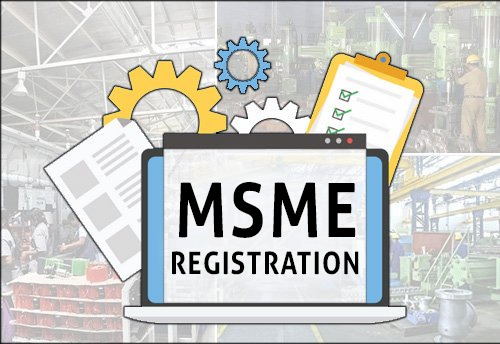Project Report for Trading Industries – A Complete Guide to Securing Business Loans.
In the fast-evolving landscape of the Indian economy, trading businesses form the lifeline of commerce. They serve as vital links between manufacturers and consumers, wholesalers and retailers, suppliers and end-users. Whether you are involved in FMCG distribution, electronics retailing, or B2B commodity trading, every trading venture needs one common foundation: financial support. This is where a carefully prepared project report for a loan becomes an indispensable tool.

A project report for a loan is not just a formal requirement—it’s a blueprint of your business vision, operational model, and financial strategy. For trading industries, where the inflow and outflow of goods are high and margins need to be constantly monitored, this report acts as a bridge between business ambition and financial feasibility.
In this blog, we explore why trading industries are lucrative, how to prepare a project report for a loan, and how it can help you secure funding under various schemes from banks and NBFCs.
Why the Trading Industry is a Promising Sector in India
India’s domestic trade sector is witnessing phenomenal growth, driven by urbanization, e-commerce, rising disposable incomes, and digitized supply chains. Trading businesses are relatively easier to start, require moderate capital, and offer fast turnover. Some of the most sought-after trading segments in India include:
- FMCG (Fast-Moving Consumer Goods) Distribution
- Electronics and Mobile Phone Trading
- Medical and Pharmaceutical Supplies
- Textile and Garment Wholesale
- Construction & Hardware Material Trading
- Agri-commodity and Steel Trading (B2B)
Despite their profitability, these businesses often need financial aid to manage inventory procurement, storage, transportation, and retail space. A robust project report for a loan becomes crucial to meet these funding needs while ensuring credibility with financial institutions.
Importance of a Project Report for a Loan in the Trading Business
A well-structured project report for a loan serves several purposes beyond loan sanctioning:
1. Loan Approval Support
Banks evaluate the commercial viability, repayment capacity, and scalability of your trading business based on the information presented in your project report.
2. Business Strategy Blueprint
It clarifies your short-term and long-term goals, pricing mechanism, turnover expectations, and working capital cycle.
3. Scheme Eligibility Document
Your project report for a loan is a mandatory requirement under various government schemes, such as:
- MUDRA Loans (Shishu/Kishore/Tarun)
- Stand-Up India
- PMEGP (Prime Minister’s Employment Generation Programme)
- CGTMSE (Credit Guarantee Fund for Micro & Small Enterprises)
Without a proper project report, funding delays or outright rejections are very common.
Key Components of a Trading Industry Project Report
If you’re seeking a business loan, your project report for loan should be comprehensive yet precise. Below are the key elements every bank-ready report should include:
1. Executive Summary
This section gives an overview of your trading business—what products you trade in, your location, target audience, and your unique selling proposition (USP).
2. Promoter Profile
Detail the background of the business owner(s), including education, professional experience, industry exposure, and any past business ventures. Banks look for capable and credible promoters.
3. Business Model
Describe how you procure goods, manage logistics, price your products, and handle customer relationships. Also, define whether your channel is B2B, B2C, retail, wholesale, or online.
4. Market Potential & Competitor Analysis
Provide current data on product demand, market gaps, consumer preferences, and your strategy to compete or capture market share.
5. Financial Projections
This is one of the most critical parts of a project report for a loan:
- Estimated Turnover for 3-5 Years
- Gross & Net Profit Projections
- Working Capital Requirements
- Monthly Cash Flow Estimates
- Break-even Point Analysis
Loan Repayment Schedule with EMI calculations
6. Loan Requirement
- Clearly state:
- Type of loan needed (Term/Working Capital)
- Total amount required
Fund utilization plan (e.g., ₹7L for inventory, ₹3L for transportation or marketing)
7. SWOT Analysis
Highlight the Strengths, Weaknesses, Opportunities, and Threats related to your business. This shows lenders you have a realistic view of your operating environment.
Sample Project Summary – FMCG Trading Business
Business Type: FMCG Wholesale Trading
Investment Requirement: ₹15 Lakhs
Loan Applied: ₹10 Lakhs (Working Capital Loan)
Projected Turnover (Year 1): ₹60 Lakhs
Net Profit Margin: 10-12%
Break-even: Within 8 Months
Loan Usage: ₹7 Lakhs for purchasing bulk FMCG stock ₹3 Lakhs for warehouse rent, local transport, and branding
This summary, presented within your project report for loan, helps the bank understand your funding needs and future potential.
Why Banks Prefer Well-Structured Project Reports
A professionally prepared project report for a loan gives financial institutions confidence. It proves that the applicant is serious, informed, and capable of managing credit responsibly. Many public and private banks also use this document to determine eligibility for interest subvention or government subsidies.
Moreover, under schemes like CGTMSE or Stand-Up India, loans can be collateral-free if the project report reflects viability and profit assurance.
Final Thoughts
In India’s high-growth trading environment, access to capital is key. A comprehensive and customized project report for a loan is your ticket to securing funds, expanding your business, and managing working capital effectively.
Be it FMCG distribution, electronics trading, or building materials, every trading business needs a financial roadmap. A solid project report for a loan not only convinces lenders but also keeps your business aligned with goals, risks, and profits.



